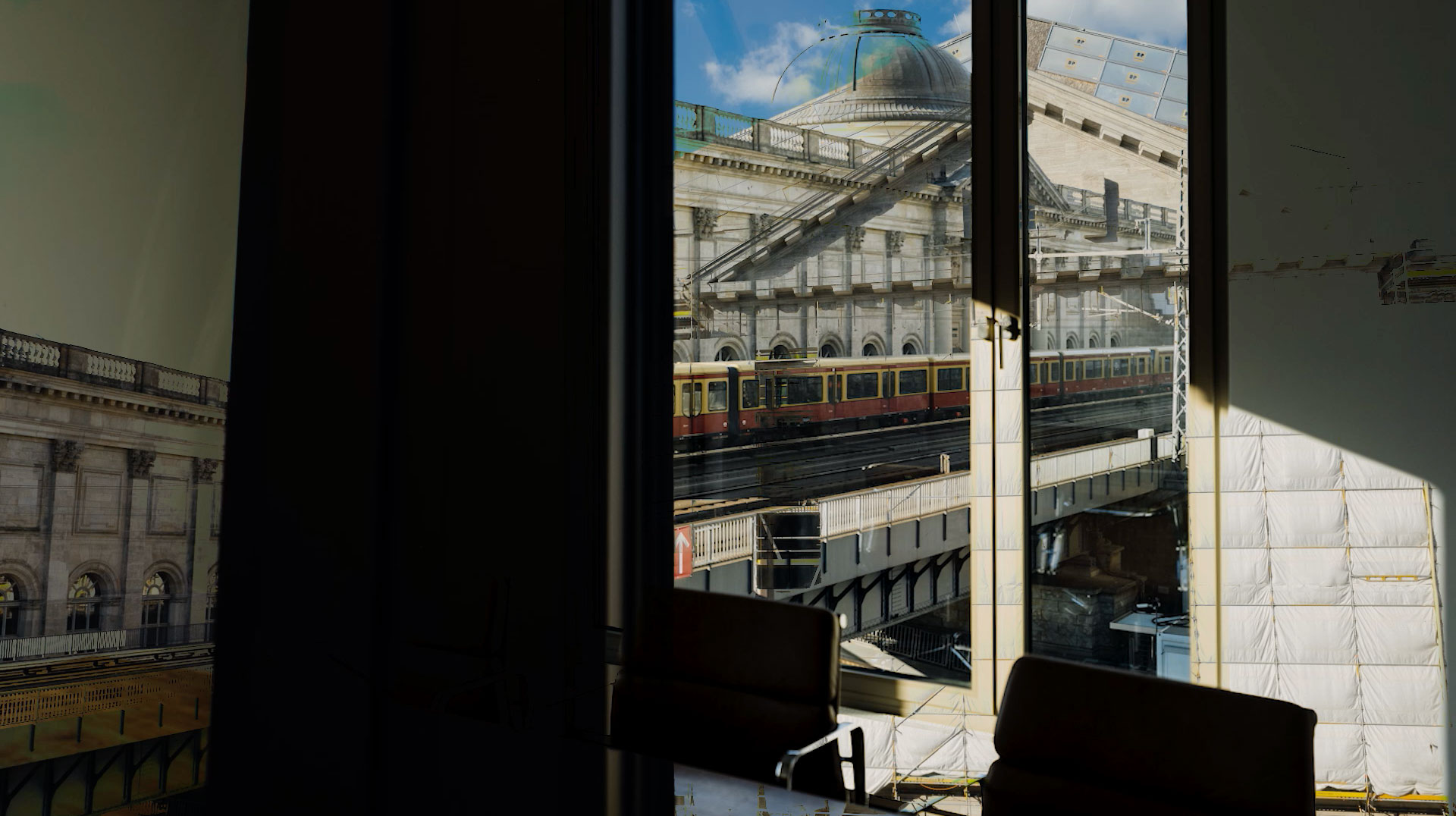For the art trade in Europe, the reduction in VAT on artworks in 2025 will create new growth dynamics that will cause the art market to flourish and benefit its players.
Italy's art market recently boomed after VAT was reduced to 5%. In Germany, photographic art has yet to be included, as it is not currently considered a VAT-privileged work of art.
Italy's art market: New VAT rate on art at 5%
On 1 July 2025, VAT in Italy was reduced to 5% on all sales and imports of works of art, antiques and collectibles.
Italy's Minister of Culture, Alessandro Giuli, commented: „Finally, VAT on works of art is being reduced from 22% to 5%. This is a historic achievement, made possible thanks to the strength of the political and parliamentary forces that initiated and shaped this process.“
By reducing VAT on art, Italy implemented EU Directive 2022/542 on the harmonisation of the tax system, which was to be implemented on 1 January 2025. This came only after prolonged protests and political wrangling, and after gallery owners protested at the Arte Fiera art fair in Bologna in February 2025 and numerous artists signed a petition.
A report by the economic research company Nomisma identified high VAT as one of the most important issues affecting the Italian art trade. It represents one of the greatest obstacles to the growth of the art market in Italy.
According to Nomisma, the high VAT rate meant that art collectors in Italy had to pay up to 18% more for the same net price than in other European countries. This made buying art in Italy less attractive, collectors bought in other EU countries and the profits of Italian art galleries fell.
Franco Broccardi from the auditing firm Studio Lombard DCA commented: „The tax reduction enables players, starting with the artists themselves, to operate on an equal footing. We are now more competitive, even if the reform has come late.“
Consequences of the VAT reduction for the Italian art trade
Federico Mollicone, chairman of the Italian Chamber of Deputies' Culture Committee, estimates that the VAT reduction will lead to an increase in turnover of 1.5 billion € for galleries, antique shops and auction houses over the next three years. This would generate higher taxable income, which would offset the loss of revenue from the reduced tax.
Other pillars of the art trade in Europe, such as the Italian art fairs Arte Fiera in Bologna, Artissima in Turin and Miart in Milan, are also expected to benefit enormously from this and increase their sales. The new regulations could also help to make Italy the central gateway for international art imports and attract foreign art buyers.
The art gallery landscape in Italy has already experienced a strong upswing. Art galleries Tim Van Laere, Gregor Staiger, Ciaccia Levi, Thomas Dane, Gisela Capitain, Wentrup and M+B have already opened new locations in major Italian cities.
Gallery owner Thaddaeus Ropac, who opened a seventh branch of the world-famous Thaddaeus Ropac Gallery in Milan in September 2025, calls the reduction „an enormous boost for Italian galleries on the international stage.“
The new VAT regulations on art will make Italy an even more important hub for the art trade in Europe. The entire art sector in Italy is expected to grow by 28%. Italy is now highly competitive at the European and international level.
The VAT increase in 2014: Effects on the art trade
The European art trade benefits from the free movement of goods within the European single market and from the fact that works of art can circulate without being subject to duties. Regulations on the taxation of works of art ensure indirect, harmonised cultural promotion and fair competition within the EU.
The background to the VAT increase in 2014 was a new VAT directive for commercial transactions. This also affected the commercial art trade and stipulated a standard tax rate on works of art of no less than 13%.
VAT on works of art in Germany was raised from 7% to 19%. The German art trade had previously operated with a VAT rate of 7% on all works of art.
Other Member States such as Austria (13%), France (5.5%) and the United Kingdom (already 5% before Brexit) found creative ways around this and retained a reduced VAT rate. For example, art galleries in the Benelux countries presented themselves as agencies and continued to sell at a reduced rate.
What were the consequences of the VAT increase in Germany?
The VAT increase in Germany led to galleries being bypassed, a loss of revenue for them and stagnation in domestic art purchases. This was because the reduced tax rate of 7% only applied to direct art purchases from artists.
However, the art trade, especially artists, is dependent on galleries and their infrastructure and mediation structure. They establish crucial networks and provide expertise and investment for artists.
In fact, the growth of the German art market stagnated. Fewer galleries and cultural enterprises were founded, and numerous small and medium-sized art galleries had to close. The high VAT rate also led to German collectors and art market players now buying art objects outside the EU or in other European countries.
The German art trade was unable to compete with the European and international art trade. According to a 2023 UBS Art Market Report, the art market was led by the USA, the UK and China, with the VAT rate for art objects in New York, the art hub of the USA, at 8.85%.
The VAT reduction was a necessary step to strengthen the competitiveness of the entire art trade in the Union vis-à-vis international auction houses and third countries.
The Federal Association of Visual Artists, the German Artists' Association and the German Cultural Council showed solidarity with the project, with the Federal Association of German Galleries and Art Dealers (BVDG) playing the decisive role in implementing the reduction. With its long-running „7 instead of 19 percent“ campaign, it drew attention to the issue and became politically active.
The BVDG presented a report on the cultural economy in 2023, according to which the turnover of the art retail trade in 2021 was a manageable 767 million euros. From this, the BVDG concluded that the expected shortfall in state budget revenue from the VAT reduction would not be „too painful.“
It could also create new dynamics in the German art trade, resulting in a significant increase in trading volume for the art sector.
Germany's art market: Reduced VAT rate on art of 7%
The work of the BVDG yielded a positive result on 1 January 2025. With the implementation of Directive 2022/542, a VAT rate of 7% was introduced for the supply and purchase of works of art, collectors' items and antiques.
This happened with the passing of the Annual Tax Act on 22 November 2024, which promised, among other things, to support independent cultural venues such as galleries.
Specifically, the VAT reduction applies in accordance with §12 (2) to „works of art, namely paintings and drawings created entirely by hand, as well as collages and similar decorative pictorial works, original engravings, cuts and lithographs, original works of sculpture, made of materials of all kinds.“ To qualify, the work of art must have been created and designed by an artist and offered for sale by an art gallery, art dealer, auction house or the artist themselves.
Claudia Roth, then Minister of State for Culture, called the reduced tax rate, as a form of indirect cultural promotion, „very good news for the German art trade.“ She explained: „This will ease the burden on our diverse gallery scene and improve its competitiveness. Lower taxes will make our galleries even more attractive to collectors and, above all, to contemporary artists, who will be able to earn more income in future thanks to the change in regulations.“
This reduction is a long overdue and significant step for the German art trade and its players. It means that art market players are no longer dependent on making art purchases in other European countries and can now once again buy art in and from their home country, thereby supporting these artists. It also creates new opportunities for German artists, who are promoted and discovered through art purchases from all over the world.
No VAT reduction for art photography
However, the reduction does not apply to artistic photography, which remains subject to VAT at 19%. This is because art photography is not recognised as an art object in Germany for tax purposes.
This includes works of art such as photographs, serigraphs, offset prints, videos and light artworks, regardless of their artistic quality, which have been produced using „exposure techniques.“
However, the EU Tax Directive states that „photographs taken by the artist himself and printed, signed and numbered either by him or under his supervision are considered works of art, provided that the edition does not exceed 30 copies.“
This means that Germany not only lags behind other European countries such as Italy, France and Belgium, which treat photography as reduced-rate art, but also continues to adhere to a definition of art that was already in place before 2014, which unfortunately does not include photography and thus fails to recognise the artistic merit of this medium and the artists themselves.
Kristian Jarmuschek from the BVDG comments: „Only through a modern and flexible tax system can art in all its forms be promoted and appreciated. It is to be hoped that the German legislature will now seize the opportunity and include artistic photography and other modern art forms in the list of tax-privileged art objects.“
Many voices in the art trade are therefore calling for the reduction to be extended to include art photography. Otherwise, they argue, this would create unequal treatment, leading to a distortion of competition in the art trade. „The goal must be to recognise photography as art“ says Claudia Roth.
Résumé
With the help of VAT reductions on works of art, the EU has reintroduced long-overdue regulations for indirect cultural promotion. Member states can use the harmonised conditions on the European art market to support their artists, galleries, dealers, auction houses, collectors and buyers.
„With the introduction of VAT concessions for all works of art, Italy is developing into a central and flourishing location for the international and European art trade.“ Says dtb-lawyer and art law expert Leon van Lee. „In Germany, it is mainly thanks to the work of the BVDG that the domestic art trade can breathe a sigh of relief again. It is now crucial that a tax reduction is also recognised for photographic art, so that this medium and its artists receive the appreciation they deserve.“
Status 24.10.2025

